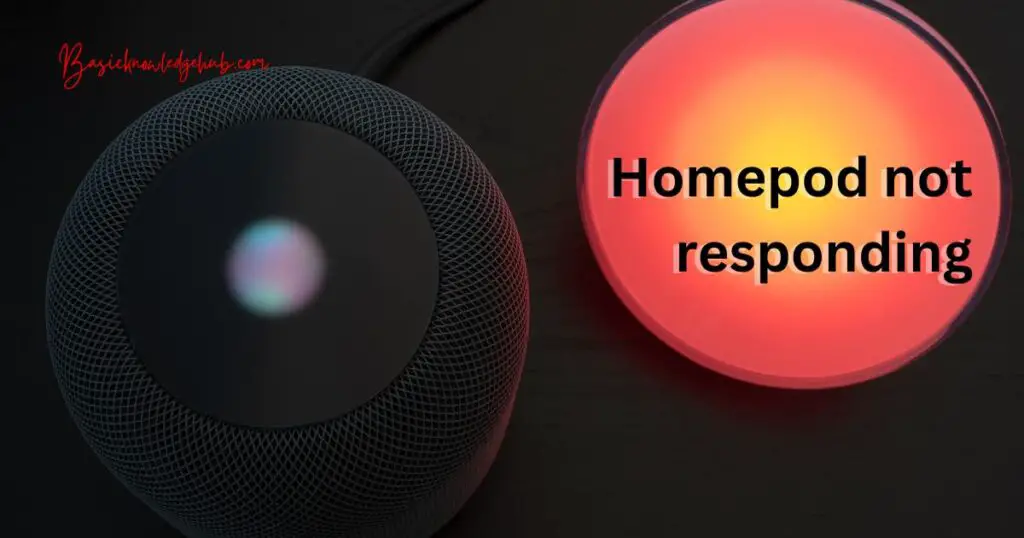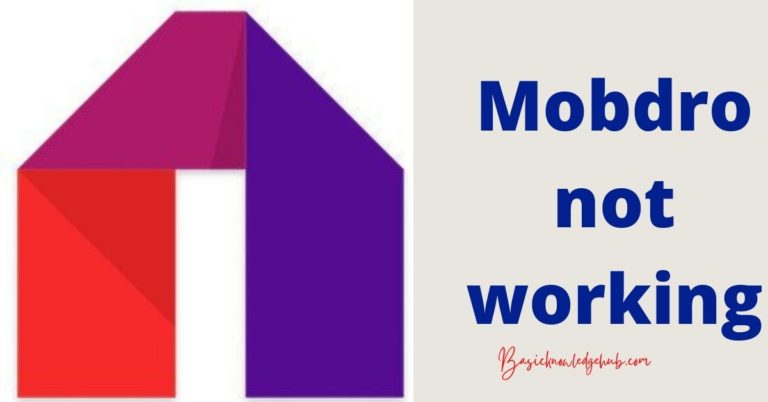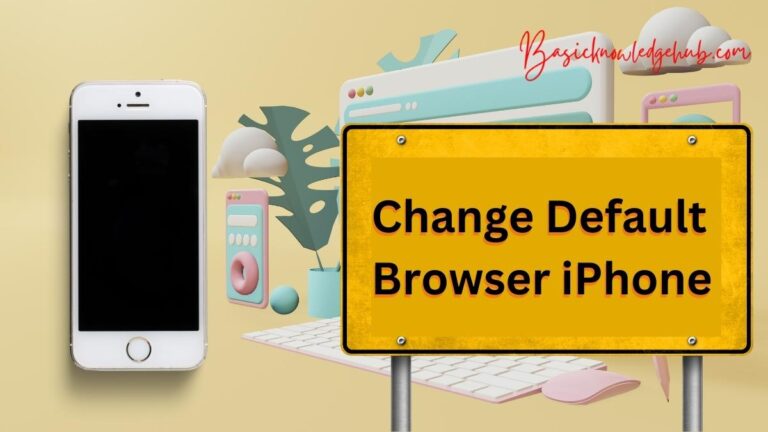Homepod not responding
Having a smart speaker like the HomePod can greatly enhance your home entertainment and automation experience. However, encountering issues where your HomePod is not responding can be frustrating. Fortunately, there are several common reasons behind this problem, and in this article, we will explore them in detail, providing step-by-step solutions to fix the issue. Whether your HomePod is unresponsive to voice commands or fails to connect, this troubleshooting guide will help you resolve the problem and get your HomePod back up and running smoothly.
Reasons behind the issue of HomePod not responding
Reasons behind the issue of HomePod not responding can include:
- Connectivity issues: If the HomePod is not properly connected to Wi-Fi or Bluetooth, it may fail to respond to commands or communicate with other devices.
- Outdated software: If the HomePod’s software is not up to date, it may experience compatibility issues or bugs that cause it to become unresponsive.
- Voice recognition problems: The HomePod may not respond to voice commands if there are issues with its microphone or if it has difficulty recognizing and understanding the user’s voice.
- Power and hardware issues: Problems with the power source or hardware components of the HomePod can lead to it becoming unresponsive.
These are some of the common reasons why a HomePod may not respond as expected. Understanding these factors can help in troubleshooting and resolving the issue effectively.

How to fix the issue of HomePod not responding?
Fix 1: Check Connectivity Issues
If your HomePod is not responding, the first step is to check for any connectivity issues. Follow these steps to address this problem:
- Ensure Wi-Fi Network Compatibility: Verify that your HomePod and the device you’re using to control it (such as an iPhone or iPad) are connected to the same Wi-Fi network. If they are connected to different networks, the communication between them may be disrupted.
- Restart your HomePod: Unplug the power cable from your HomePod, wait for about 10 seconds, and then plug it back in. This simple step can often resolve connectivity issues by resetting the device’s network connection.
- Reset your Wi-Fi Router: If restarting the HomePod didn’t work, try resetting your Wi-Fi router. Power off the router by unplugging it from the power source, wait for about a minute, and then plug it back in. Give the router a few minutes to restart, and then check if the HomePod is responding.
- Improve Wi-Fi Signal Strength: Poor Wi-Fi signal strength can also cause connectivity problems. Ensure that your HomePod is within the range of your Wi-Fi router and that there are no physical obstructions hindering the signal. If possible, move your HomePod closer to the router to strengthen the connection.
By checking and addressing connectivity issues, you can resolve problems that may prevent your HomePod from responding properly.
Remember, if the issue persists after trying this fix, proceed to the next step for further troubleshooting.
Fix 2: Update HomePod Software
Outdated software can sometimes lead to issues where your HomePod is not responding. To ensure your HomePod has the latest software updates, follow these steps:
- Open the Home App: Launch the Home app on your iPhone or iPad, which is used to control your HomePod.
- Access HomePod Details: Tap on the “Home” tab at the bottom of the screen to view your list of connected devices. Locate your HomePod in the list and long-press on its icon to access the details.
- Check for Updates: Scroll down in the HomePod details screen and look for the “Update Available” section. If there is an update available, it will be displayed here.
- Install the Update: If an update is available, tap on the “Update” button and follow the on-screen instructions to install it. Make sure your device is connected to a stable Wi-Fi network during the update process.
- Automatic Updates: To avoid missing future software updates, you can enable automatic updates for your HomePod. Go to the “Home Settings” in the Home app, select your home, and toggle on the “Install Updates Automatically” option.
By keeping your HomePod’s software up to date, you can ensure that it functions optimally and responds to your commands promptly. If the HomePod is still unresponsive after updating the software, proceed to the next fix for further troubleshooting.
Fix 3: Troubleshoot Voice Recognition Issues
If your HomePod is not responding to voice commands, there may be issues with its voice recognition capabilities. Follow these steps to troubleshoot voice recognition problems:
- Check Microphone Settings: Ensure that the microphone on your HomePod is not muted. Open the Home app on your iPhone or iPad, go to the “Home” tab, locate your HomePod, and adjust the volume or mute settings if necessary.
- Clear Ambient Noise: Place your HomePod in an area away from noisy appliances or sources of loud sounds. Background noise can interfere with voice recognition, so reducing ambient noise can help improve accuracy.
- Train Siri: If Siri is having difficulty understanding your voice, you can retrain it to recognize your voice more accurately. In the Home app, go to the “Home” tab, locate your HomePod, access the details, and select the “Recognize My Voice” option. Follow the prompts to train Siri to your voice.
- Check Language Settings: Ensure that the language settings on your HomePod and the connected device are aligned. Mismatched language settings can cause voice recognition issues. Open the Home app, go to the “Home” tab, select your HomePod, and verify the language settings.
By troubleshooting voice recognition problems, you can improve the HomePod’s responsiveness to voice commands. If the issue persists, proceed to the next fix for further troubleshooting.
Fix 4: Address Power and Hardware Issues
In some cases, power or hardware-related issues can result in an unresponsive HomePod. To address these problems, follow these steps:
- Check the Power Source: Ensure that your HomePod is properly connected to a power source. Verify that the power cable is securely plugged into the back of the device and the power outlet. If you’re using an extension cord or power strip, try connecting the HomePod directly to a wall outlet to rule out any issues with the power source.
- Try a Different Power Outlet: Sometimes, electrical issues with a specific power outlet can cause the HomePod to become unresponsive. Plug the HomePod into a different power outlet to see if it resolves the problem.
- Reset your HomePod: If none of the above steps work, you can try resetting your HomePod to its factory settings. Open the Home app on your iPhone or iPad, go to the “Home” tab, locate your HomePod, access the details, and scroll down to find the “Remove Accessory” option. Follow the prompts to remove the HomePod from your home. Afterward, set up your HomePod again as a new device.
- Contact Apple Support: If you’ve exhausted all troubleshooting steps and your HomePod is still not responding, it may be necessary to seek assistance from Apple Support. They can provide further guidance and determine if any hardware repairs or replacements are needed.
By addressing power and hardware-related issues, you can potentially resolve the problem of your unresponsive HomePod. If the issue persists, reaching out to Apple Support is recommended.
Fix 5: Reset HomePod Settings
If all else fails and your HomePod is still not responding, resetting the device’s settings can often resolve stubborn issues. Here’s how you can reset your HomePod:
- Unplug the HomePod: Disconnect the power cable from your HomePod and wait for about 10 seconds.
- Factory Reset: Press and hold the top of the HomePod with your finger. While continuing to hold, plug the power cable back into the HomePod. Keep your finger pressed on the top until you hear a tone, which indicates that the HomePod is in recovery mode.
- Set Up HomePod: Release your finger from the top of the HomePod and follow the voice prompts to set it up as a new device. Use the Home app on your iPhone or iPad to complete the setup process.
Note: Resetting your HomePod will erase all personalized settings and data associated with it. Make sure to back up any important data before proceeding with the reset.
By resetting your HomePod, you can start fresh and potentially resolve any underlying issues causing it to be unresponsive. After the reset, test the HomePod to see if it is now responding properly.
Remember, if the problem persists even after resetting, it is recommended to contact Apple Support for further assistance. They can provide additional troubleshooting steps or determine if a repair or replacement is necessary.
Fix 6: Check for Interference from Other Devices
Interference from nearby electronic devices can sometimes disrupt the functionality of your HomePod, leading to unresponsiveness. Follow these steps to check for and address any potential interference:
- Move Away Electronic Devices: Ensure that your HomePod is not placed near other electronic devices that emit strong electromagnetic signals. Examples include routers, cordless phones, baby monitors, microwave ovens, and certain types of lighting fixtures. Move these devices away from your HomePod to reduce potential interference.
- Test in Different Locations: Try moving your HomePod to a different location within your home. This can help determine if the unresponsiveness is specific to its current placement. Experiment with different positions and rooms to find the optimal location that minimizes interference.
- Disable Interfering Devices: Temporarily turn off or unplug electronic devices in close proximity to your HomePod and observe if the responsiveness improves. If you identify a particular device that consistently causes interference, consider relocating it or using shielding methods to minimize its impact on your HomePod.
By minimizing interference from other devices, you can improve the responsiveness of your HomePod. If the issue persists, it is recommended to reach out to Apple Support for further assistance.
Fix 7: Restore HomePod to Factory Settings
If none of the previous fixes have resolved the issue of your unresponsive HomePod, restoring it to factory settings can be a potential solution. Here’s how you can restore your HomePod:
- Unplug the HomePod: Disconnect the power cable from your HomePod and wait for about 10 seconds.
- Factory Reset: Press and hold the top of the HomePod with your finger. While continuing to hold, plug the power cable back into the HomePod. Keep your finger pressed on the top until you hear a series of three beeps, which indicates that the HomePod is being reset.
- Set Up HomePod: Release your finger from the top of the HomePod and follow the voice prompts to set it up as a new device. Use the Home app on your iPhone or iPad to complete the setup process.
- Reconfigure Settings: After the factory reset, you will need to reconfigure your HomePod settings, such as connecting it to your Wi-Fi network and adding it to your Home app.
Note: Restoring your HomePod to factory settings will erase all personalized settings, data, and Siri history associated with the device. Ensure that you have backed up any important data before proceeding.
By restoring your HomePod to factory settings, you are essentially starting over with a clean slate, which can help resolve persistent issues with responsiveness. If the problem still persists, it is recommended to contact Apple Support for further assistance.
Fix 8: Update Connected Device’s Software
In some cases, an unresponsive HomePod may be due to compatibility issues with the connected device, such as an iPhone or iPad. Updating the software on your connected device can help address these issues. Follow these steps to update the software:
- Check for Software Updates: Open the Settings app on your iPhone or iPad.
- Go to “General”: Scroll down and tap on “General” in the Settings menu.
- Select “Software Update“: Look for the “Software Update” option and tap on it.
- Install Updates: If there is an available software update, tap on “Download and Install” to begin the update process. Ensure that your device is connected to a stable Wi-Fi network and has sufficient battery power or is connected to a power source.
- Follow On-Screen Instructions: Follow the on-screen instructions to install the software update. Your device may need to restart during the process.
Updating the software on your connected device ensures that it is compatible with the HomePod and can communicate effectively. After updating the software, check if the HomePod is now responding as expected.
If the issue persists, consider contacting Apple Support for further assistance, as they can provide personalized troubleshooting steps and help resolve the problem.
Preventing Tips to Avoid HomePod Not Responding Issues
Preventing unresponsiveness in your HomePod can help you enjoy a seamless smart home experience. Here are some tips to keep your HomePod in optimal condition:
- Keep Software Updated: Regularly update the software on your HomePod and connected devices to ensure compatibility and access the latest features and bug fixes.
- Maintain a Stable Wi-Fi Connection: Ensure a stable and reliable Wi-Fi connection by placing your HomePod within range of your Wi-Fi router and minimizing interference from other devices.
- Protect from Power Surges: Use surge protectors to safeguard your HomePod against power surges and fluctuations that can damage the device.
- Place Away from Obstructions: Position your HomePod away from physical obstructions or sources of interference, such as walls, appliances, or other electronic devices.
- Minimize Background Noise: Place your HomePod in a quiet area to improve voice recognition accuracy and minimize background noise interference.
- Regularly Clean the HomePod: Clean the HomePod’s exterior using a soft, lint-free cloth to remove dust and dirt that can affect its performance.
- Optimize Room Acoustics: Consider adjusting room acoustics, such as using rugs or curtains, to minimize sound reflections that may impact the HomePod’s audio quality.
- Use Quality Power Cables: Ensure you use high-quality power cables and connectors to maintain a reliable power connection for your HomePod.
By following these preventive measures, you can reduce the chances of encountering unresponsiveness issues with your HomePod and enjoy a seamless smart home experience.
Conclusion
In conclusion, troubleshooting a HomePod that is not responding can be frustrating. However, by addressing connectivity, software, voice recognition, power, and hardware issues, along with checking for interference and updating connected devices, you can often resolve the problem. If the issue persists, reaching out to Apple Support for further assistance is recommended. With these steps, you can regain control of your HomePod and enjoy its features seamlessly.
FAQs
Possible reasons include voice recognition issues, microphone settings, or background noise interference.
Check Wi-Fi network compatibility, restart the HomePod, and reset the Wi-Fi router if necessary.
Open the Home app, check for updates, and follow the prompts to install the available update.
Consider troubleshooting voice recognition problems, power sources, and hardware issues.
Yes, try resetting the HomePod’s settings or restoring it to factory settings as a last resort.
Move away electronic devices, test different locations, and temporarily disable interfering devices.
Open the Settings app, go to “General,” select “Software Update,” and install any available updates.



